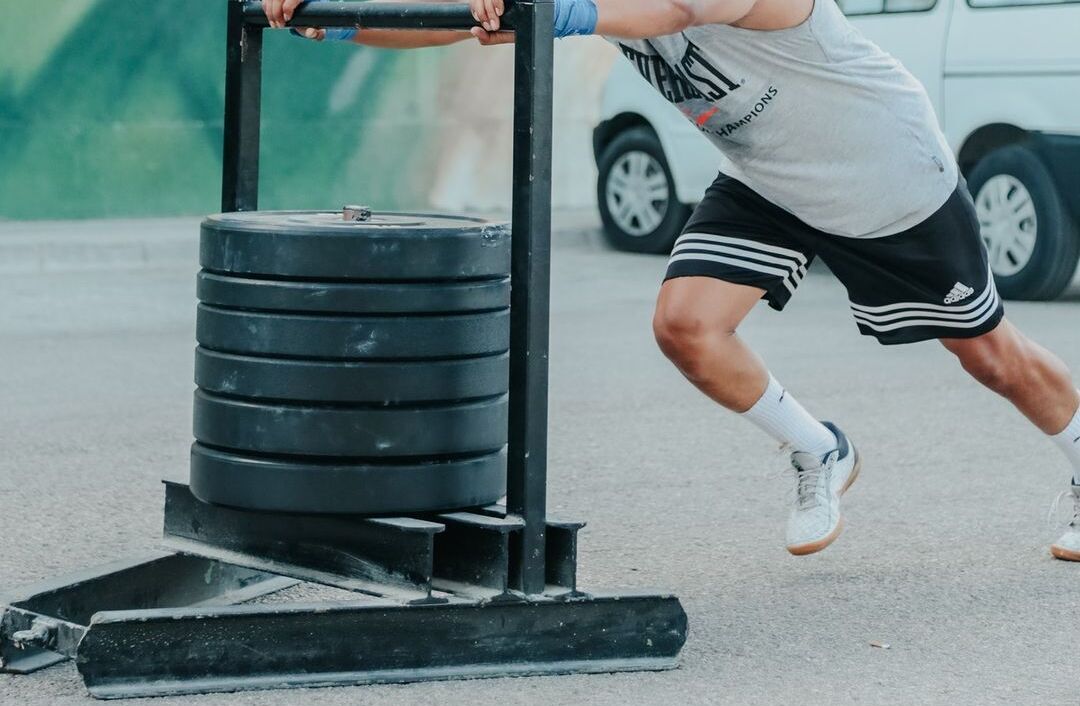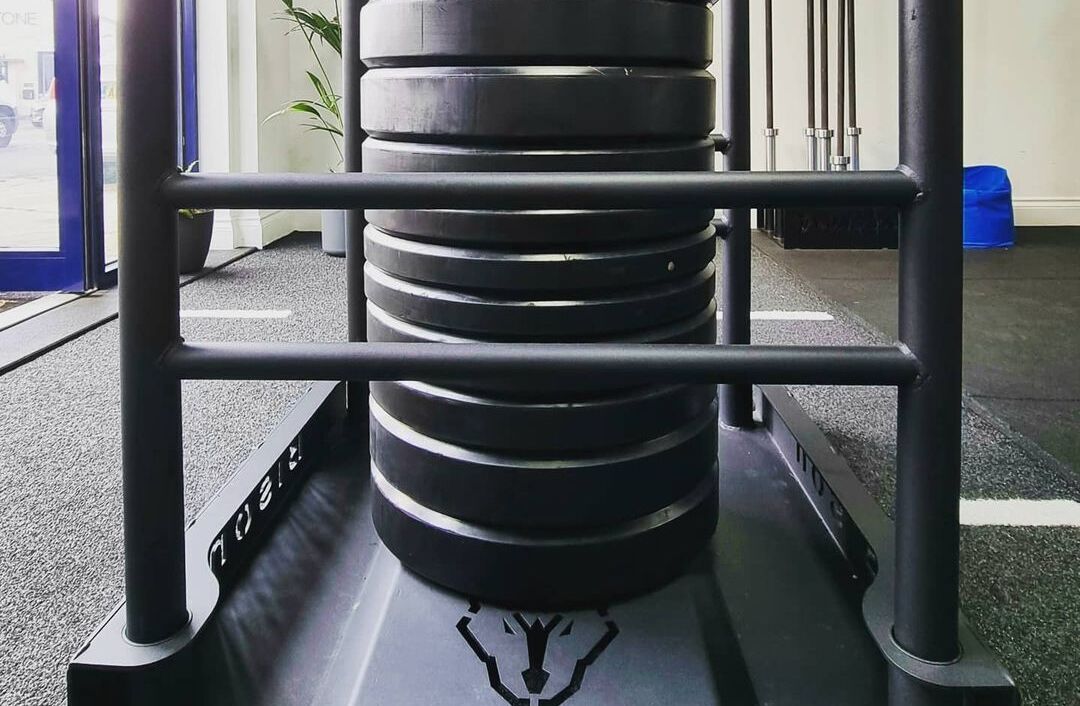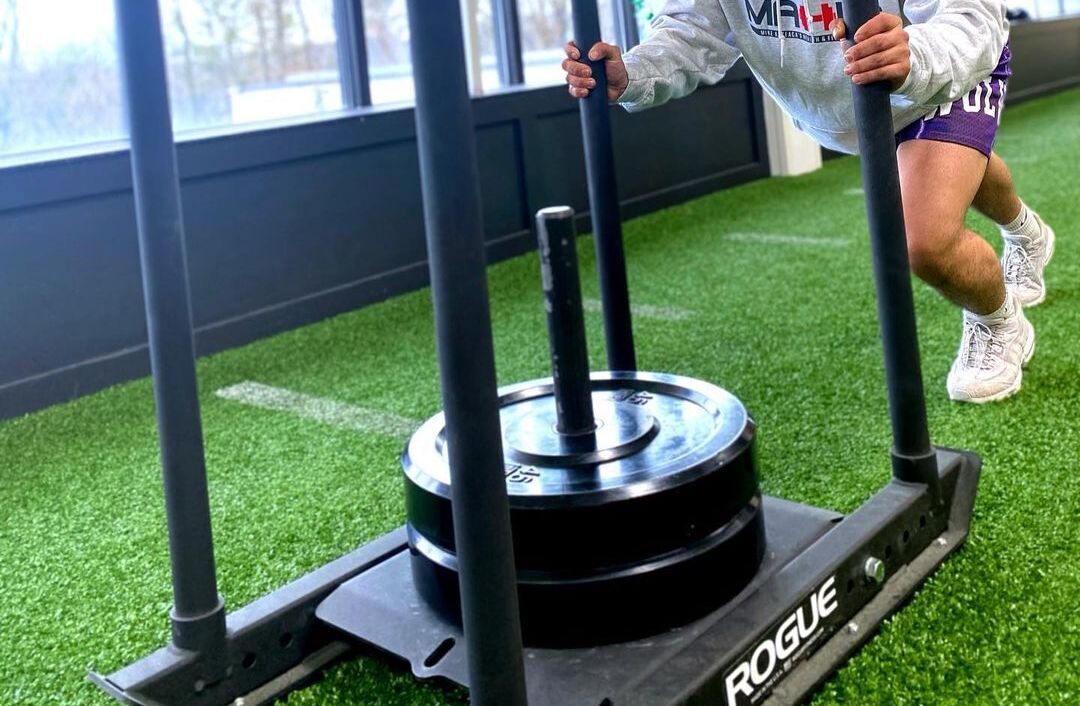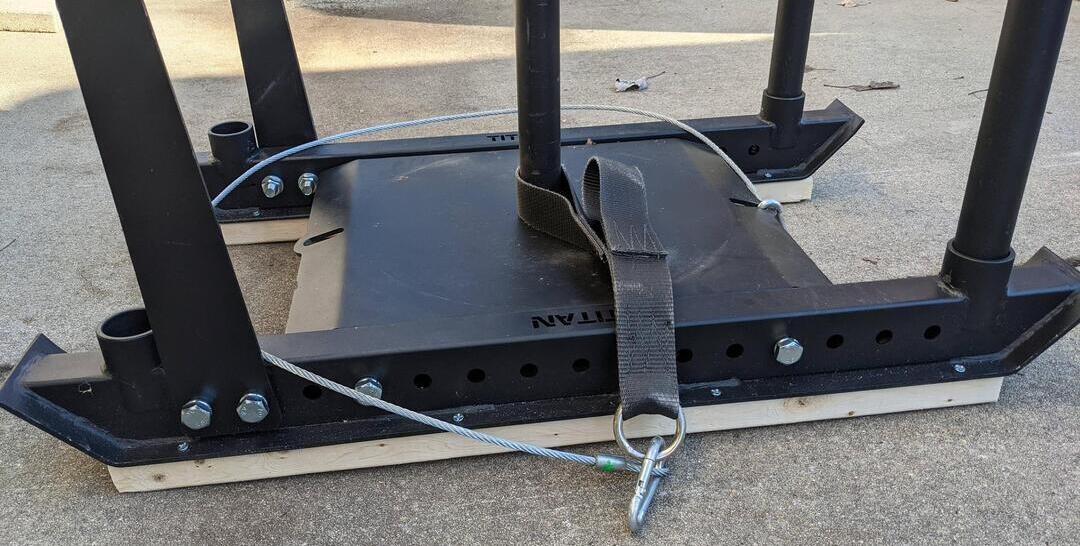Weighted sleds give a full-body workout that builds strength, speed, and power. But if you don’t use the right weight (or don’t use it the right way), you can get back strain or more serious injuries like a pulled muscle.
So, how much does a sled weigh?
The average sled will weigh about 70 pounds before adding any weights. However, there are lighter sleds for sprint training that can weigh as little as 19 pounds, while heavy-duty sleds with higher maximum weight capacity can reach as high as 100 pounds.
So, a sled’s weight affects your workout’s intensity and what kind of performance you can get from a single piece of equipment.
In this article, we won’t just talk about numbers (or how much sleds weigh) but the right way to use and choose the weight for your routine.
How much do workout sleds weigh?
The weight of a workout sled can vary greatly because of the following factors.
Purpose
In general, workout sleds fall under two categories: those designed for building power and strength and those designed for building speed.
Workout sleds that build strength and power are built to carry massive amounts of weight—some of them can carry up to 750 pounds.
The frame must be made of strong and solid metal to support that load. In total, the frame can weigh from 40 to 70 pounds.
Workout sleds that build speed will carry less load, and have sleeker, lighter frames that can be easily maneuvered on different surfaces, from gym floors to grass. The weight ranges from 15 to 25 pounds.
Some sleds weigh in the mid-range, from 25 to 40 pounds, and can be used for any type of training.
Some of them can still carry heavy weights because they use premium materials or have attachments you can use for specific workouts.
Portability
Workout sleds in professional gyms are huge and heavy. However, as home gyms have become more popular, brands are releasing smaller, lighter sleds that can be disassembled or folded up.
For example, BlueDot Trading’s speed sleds are usually 15 to 18 pounds, but they now have a 7-pound model for home use. It replaces heavy handlebars with a harness and can be packed into a closet between workouts.
Design
There are many different kinds of workout sleds: prowlers, wheelbarrows, pull sleds, etc. Some are bulkier than others; additions like handlebars and wheels can add to the sled’s total weight.
Using a weighted sled

One of the reasons why sled training is so popular is that it uses very familiar movements: you either push it or pull it.
The level of difficulty is affected by the weight, the position of your arms, and the angle with which you hold the bars.
For example, bend your elbows and keep your arms close to your body when you first start using the sled. This helps you maintain proper posture and strengthen your spine.
Once you’ve built up your fitness level or familiarity with sleds, straighten your arms when you push. This gives your shoulders, upper torso, spine, and core a tougher workout.
Before adding weights to the sled, ensure you know the proper form. Watch this video on how to push the sled the right way to avoid injury.
Types of Weighted Sleds
Heavy pushing sled
This sled will typically have a center pole where you can stack Olympic-sized weights and a handlebar for pushing.
Prowler sled
Unlike a simple pushing sled with basic handlebars, a prowler has a lower grip. That allows you to customize your workout to engage different muscle groups or increase intensity. For example, using a lower grip will require more leg power.
Pull-only weight sled
As the name implies, this sled requires you to pull the load. You either pull the strap or use the belt to attach the sled to your waist.
Sleds with Wheels
These work exactly like other sleds but with wheels instead of skis. This protects your flooring and can even be easier to maneuver on non-slick surfaces like concrete or grass. Some models also have wheels with adjustable resistance.
Sleds that convert to a wheelbarrow
Some sleds will come with a wheelbarrow attachment that consists of a bumper plate for a front wheel and adjustable poles that can be locked at an angle.
Smaller dragging sleds for sprint training
These light sleds have a small frame and harness and give additional resistance when you run. Since you will bring these outdoors, weight and portability are important. Other key features are durable runners that work on rough surfaces and a stable harness.
How much weight should you push or pull?

That depends on your fitness level, the type of exercise you are performing, and your fitness goals.
Here are some averages, but remember that weight is not the only way to increase intensity.
You can use lower weights while pushing for longer distances or adjusting your arm position or grip.
- For beginners: Start with a weight you can push without breaking proper form, then gradually build it up
- For power: Use 70% to 90% of your body weight
- For sprint training: Use 10% to 40% of your body weight
Do weight sleds make you faster?
Sled pulls are often used in sprint training to improve acceleration time. Since you are pulling a weight, you must generate more horizontal ground reaction force to increase your speed.
Sled pulls can also improve a runner’s overall conditioning because of how it engages leg muscles and the core.
However, it would be best if you didn’t use very heavy weights while sprinting because it can affect your form and cause an injury.
How heavy is a Rogue sled?
Rogue sleds range from 20 to 80 pounds, depending on the model. Most of the sleds are fairly lightweight and fall from 20 to 30 pounds (like Rogue S-25, Rogue E-sled, and Rogue Slice) weighs about 25 pounds, while the top-of-the-line Rogue Dog Sled series weighs a whopping 80 pounds or higher.
Is it better to pull or push a sled?
Both workouts are effective, but since they use different movements, they will focus on certain groups of muscles.
Pushing requires more work from the hip area, so it can help develop the glutes and increases speed and power.
Pulling requires more work from the leg and knees, so it can strengthen the knees and leg muscles, as well as the quads.
Find the best sled weight and workout for you

There is no “ideal weight” for any kind of exercise. You must factor in your fitness level, goals, and even special health considerations like old injuries. But the good news is that sleds are very customizable, and you can adjust the weight and movements according to your needs.




